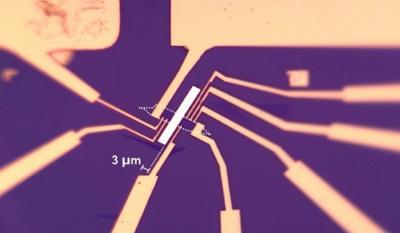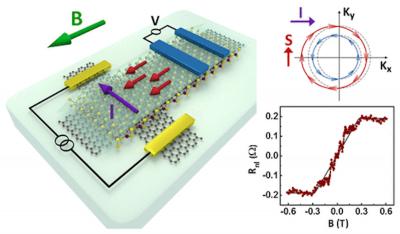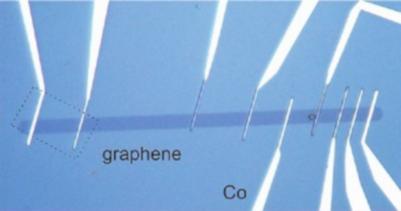Researchers manage to induce “artificial magnetic texture” in graphene
An international research team, led by the University at Buffalo, has reported an advancement that could help give graphene magnetic properties. The researchers describe in their work how they paired a magnet with graphene, and induced what they describe as artificial magnetic texture in the nonmagnetic material.
 The image shows eight electrodes around a 20-nanometer-thick magnet (white rectangle) and graphene (white dotted line). Credit: University at Buffalo.
The image shows eight electrodes around a 20-nanometer-thick magnet (white rectangle) and graphene (white dotted line). Credit: University at Buffalo.
Independent of each other, graphene and spintronics each possess incredible potential to fundamentally change many aspects of business and society. But if you can blend the two together, the synergistic effects are likely to be something this world hasn’t yet seen, says lead author Nargess Arabchigavkani, who performed the research as a PhD candidate at UB and is now a postdoctoral research associate at SUNY Polytechnic Institute.

